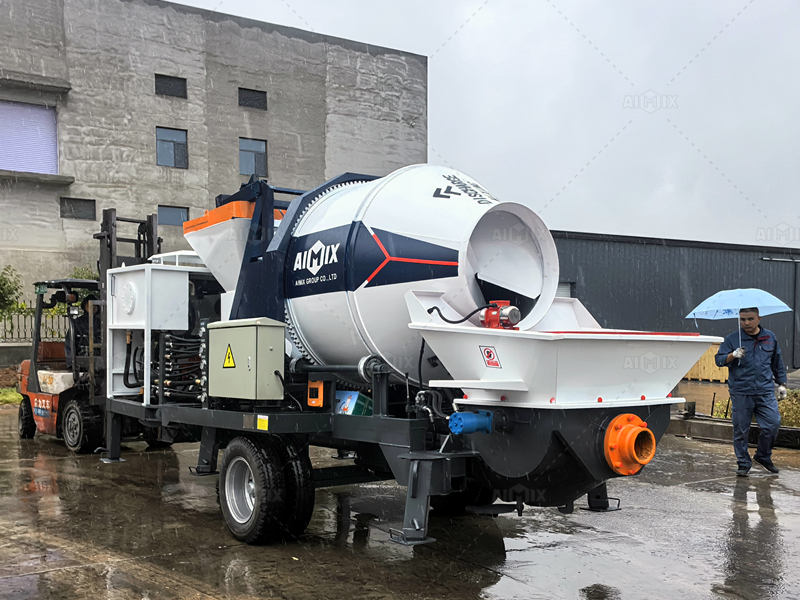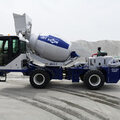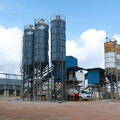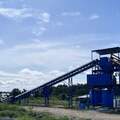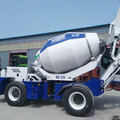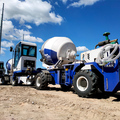A stationary concrete pump is an essential piece of equipment for large-scale construction projects, enabling efficient and continuous concrete placement over long distances. However, blockages can occur due to improper material mixing, pipeline obstructions, or pump wear and tear. After a blockage, it is crucial to perform thorough maintenance to restore the pump's functionality, prevent further issues, and extend its lifespan. Below are detailed tips for maintaining a stationary concrete pump after a blockage.
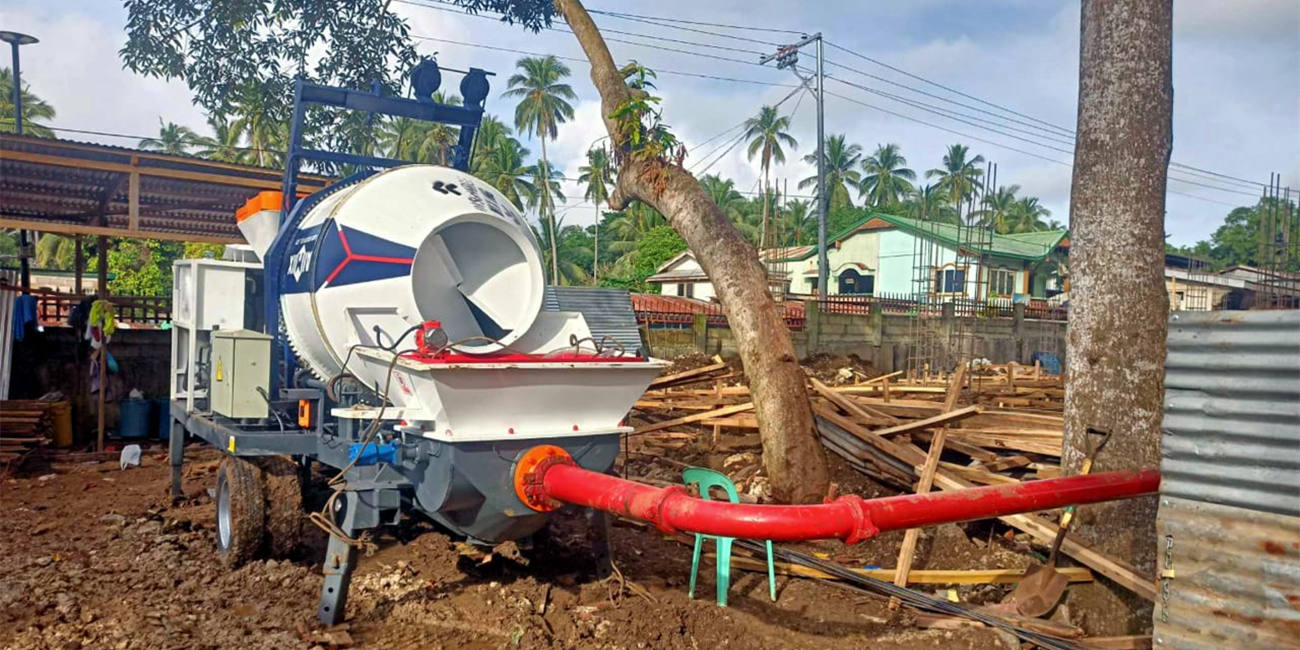
Identifying and Clearing the Blockage
Before performing maintenance, ensure that the blockage is completely removed to prevent additional strain on the pump components.
Stop the Pump Immediately – The moment a blockage is detected, turn off the pump to avoid excessive pressure buildup that can cause damage to the pipelines or other components.
Reverse Pumping Method – Many stationary concrete pumps have a reverse function that allows the concrete to move backward, helping to dislodge the obstruction.
Manual Removal – If reverse pumping does not clear the blockage, disconnect the clogged section of the pipeline and remove hardened concrete using high-pressure water, chisels, or pipeline vibrators.
Flush the System – Once the blockage is removed, flush the entire pipeline with clean water or a cement slurry to remove any residual concrete.
Inspecting the Pipeline for Damage
Blockages can cause pressure surges that may weaken or crack the pipeline. A thorough inspection after clearing the blockage is necessary to prevent future failures.
Check for Cracks or Leaks – Inspect the entire length of the pipeline, focusing on joints and bends where pressure buildup is highest.
Examine Seals and Gaskets – Worn-out seals can lead to leaks, reducing pumping efficiency and increasing maintenance costs. Replace any damaged seals immediately.
Assess Wear in High-Stress Areas – Elbows, reducers, and couplings experience the most pressure; look for excessive wear and replace parts if necessary.
Inspecting the Concrete Pumping System
A stationary concrete pump consists of various mechanical and hydraulic components that must be checked after a blockage.
Check the S-Valve or Rock Valve – These components direct concrete flow. Inspect them for wear, and if there are signs of abrasion, replace or repair them.
Examine the Hydraulic System – Hydraulic pressure fluctuations during blockages can damage hoses and cylinders. Check for leaks and refill hydraulic fluid if necessary.
Test the Lubrication System – Ensure that all moving parts, including pistons and bearings, are adequately lubricated to prevent excessive wear.
Cleaning and Preventive Maintenance
Proper cleaning after a blockage helps prevent further accumulation of hardened concrete, which can lead to recurrent issues.
Thoroughly Wash the Hopper – Residual concrete in the hopper can harden and cause further blockages. Use a pressure washer to clean the walls and bottom of the hopper.
Flush the Delivery System – Run water or a cement slurry through the pipelines to remove leftover material.
Inspect and Clean Filters – Clogged filters in the hydraulic or cooling systems can restrict fluid flow, leading to overheating and inefficiencies.
Checking the Wear Plates and Cutting Rings
Wear plates and cutting rings are critical components that help regulate concrete flow. After a blockage, these parts may suffer significant wear and need inspection.
Assess Wear Thickness – If the wear plate has thinned beyond its recommended limit, replace it to maintain proper pump function.
Ensure Proper Alignment – Misaligned cutting rings can cause uneven pressure distribution, increasing wear on pump parts.
Evaluating Pump Performance
After a blockage, test the stationary concrete pump to ensure it operates smoothly before resuming normal operations.
Conduct a Trial Run with Water – Before pumping concrete again, run clean water through the system to check for leaks and ensure even flow.
Monitor Pressure Readings – Abnormal pressure fluctuations may indicate lingering obstructions or pipeline issues.
Test the Remote Control System – Ensure that the remote control functions correctly for safe and efficient operation.
Training Operators to Prevent Future Blockages
Many blockages occur due to operational errors, such as improper concrete mix ratios or poor pumping techniques. Proper training can help minimize future incidents.
Ensure Correct Concrete Mix Proportion – Using overly dry or coarse aggregates increases the risk of blockages. Operators should follow manufacturer guidelines for optimal concrete consistency.
Implement Routine Flushing Procedures – Encourage operators to flush the system after each use to prevent material buildup.
Teach Early Detection of Blockages – Operators should recognize early signs of blockages, such as abnormal pressure spikes or inconsistent concrete flow, to take corrective action before major obstructions occur.
Keeping Spare Parts Readily Available
Having replacement parts on hand can minimize downtime when addressing blockages and maintenance needs.
Stock Essential Components – Keep spare wear plates, cutting rings, hoses, seals, and gaskets in inventory for quick replacements.
Maintain a Tool Kit for On-Site Repairs – Equip the job site with basic repair tools, including wrenches, lubricants, and high-pressure cleaning equipment.
Scheduling Routine Inspections and Servicing
Regular maintenance is key to preventing blockages and ensuring the long-term performance of a stationary concrete pump.
Daily Checks – Inspect the hopper, pipelines, and lubrication system before and after each use.
Weekly Maintenance – Perform deeper inspections of the hydraulic system, wear parts, and seals.
Monthly Servicing – Conduct a comprehensive system review, including pipeline replacements, hydraulic fluid changes, and structural assessments.
A stationary concrete pump is a valuable asset for large construction projects, but blockages can cause significant downtime and mechanical wear. By following a structured maintenance routine after a blockage, including clearing obstructions, inspecting components, and implementing preventive measures, operators can ensure smooth pump performance and prolong equipment life. Proper training, routine inspections, and maintaining spare parts can further reduce the risk of blockages and operational delays. Implementing these best practices will help optimize efficiency, reduce repair costs, and keep construction projects on schedule.
